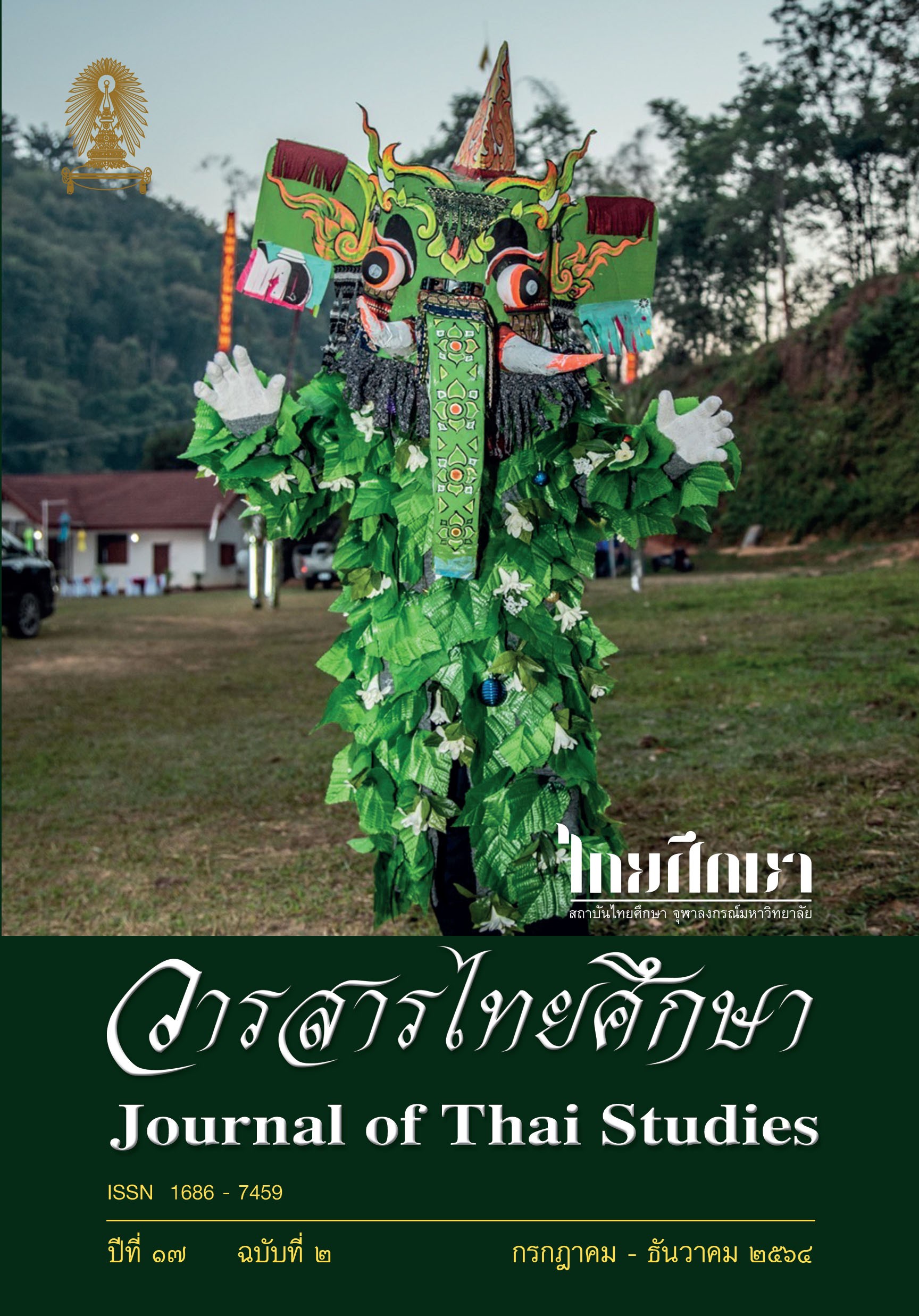‘Ayok’: Buddhist Space of the Plang (Tai Luay or Lua) Ethnic Group
Main Article Content
Abstract
The primary objective of this study was to explain the efforts of a Buddhist ethnic group to establish religious-cultural space. This study focused on the ‘Ayok’ festival of the Plang (Tai Luay or Lua) ethnic group, a festival that involves the use of horrifying objects for the purpose of guarding the body of the Buddha. The data for this study, collected through an on-going field study dating back to 2004 and through additional broad-scale fieldwork in 2017, were from two sources: (i) the Plang community in Huay Nam Khun village in Mae Fah Luang district/sub-distri1ct, Chiang Rai province; and (ii) Ayok-related legends commonly told in the Shan State of the Republic of the Union of Myanmar. The data were used to make a diachronic comparison of the ethno-cultural dynamics and changes, in light of contemporary ethnicity, of the Plang in their geo-cultural space within Buddhism.
According to the study, the arrival of Buddhism in mainland Southeast Asia gave rise to the creation of literary works by some ethnic groups in the Lanna Kingdom and the Shan State, whose native languages belonged to the Tai family. However, according to folk legends, some natives, mostly Luas, claimed to have seen the Buddha himself and been entrusted with the duty of guarding his relics or objects, even before the birth of any Buddhism-dominated community and before any similar efforts by other Tai-speaking ethnic groups.
The Ayok Festival observed by the Plang of Huay Nam Khun, a community of high ethnic diversity, reflects that, although this ethnic group is socially classified as a kingdom-less or state-less people, along with the Shan,Tai Lue and Tai Khoen, the Plang, nonetheless, have developed a traditionexplaining that their ancestors lived during the same period as the Buddha, and, therefore, were appointed guardians of his body. This tradition, known as the Buddha Cremation Memorial Day (usually in May) amongst Lanna cultures, is celebrated by the Plang of Huay Nam Khun on the full-moonnight of December. The study shows that the reason an ethnic group attempts to occupy a space in Buddhism is to solidify its presence in a multicultural society. Nevertheless, such presence is still subjected to repression arising from Buddhist hierarchical ideology.
Downloads
Article Details

This work is licensed under a Creative Commons Attribution-NonCommercial-NoDerivatives 4.0 International License.
Journal of Thai studies is licensed under a Creative Commons Attribution-Noncommercial-NoDerivatives4.0 Intenational (CC BY-NC-ND 4.0) licence, unless otherwise stated. Plese read our Policies page for more information on Open Access, copyright and permissions.
References
Hiranro, C., Mahama, A., Prapattong, P. (2017). “Cultural Spaces Based on a Comparison of Chicken Bone Divination Scripts from Three Villages.” Proceeding in The 10th International Conference of HUSOC Network on “Dynamics of Humanities and Social Sciences in Cross-Border Societies” on February 2-3, 2017. Main Auditorium at Chiang Rai Rajabhat University. p. 58-71.
Hongsuwan, P. (2005). The Buddha Relics Myths of The Tai People: Significance and Interaction between Buddhism and Indigenous beliefs. Bangkok: Graduate School of Chulalongkorn University.
Phleng so phro Lua Plang Luaplang song. (2018, April 21). Phi ta khon chuang Songkran prapheni chao Lua Plang ton 3 [Phi Ta Khon Masks in Lua (Plang)’s Songkran festival, Chapter 3] [Video file]. Retrieved from https://www.youtube.com/watch?v=2Mat7cdeDrM
Poolsuwan, S. (2016). “Theravada in Southeast Asia.” Journal of Sociology and Anthropology. 35 (2): 1-19.
Scott, J. C. (2009). The Art of Not Being Governed: An Anarchist History of Upland Southeast Asia. New Haven & London: Yale University press.
Suwannawat, M. (2003). Language use and language attitude of the Plang ethnic group in Ban Huy Nam Khun, Chiang Rai province. Master’s Thesis of Arts, Mahidol University, Thailand.
Wisudthiluck, S. and Thong-on, W. (2014).Spatial Patterns of Tamnan Phra Chao Liab Loke (The Legend of the Buddha’s Travels Around the World): Geographic Information System analysis.” Journal of Sociology and Anthropology. 35 (2): 29-43.
Interviews
NanKong. (2017a, December 9). Personal Interview.
NanKong. (2017b, December 10). Personal Interview.
Talapung, P. (2018, December 1). Personal Interview.


